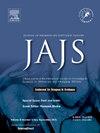术中放射成像:创伤和骨科手术模式的最新进展
Q4 Medicine
引用次数: 0
摘要
术中放射成像在患者护理的管理算法中起着关键作用。不同的术中模式在诊断、治疗和监测受各种医疗或手术条件影响的患者方面有应用。技术、计算机软件和各种放射模式的集成的进步扩大了术中成像在医疗保健中的应用。术中放射成像已经从最初的常规透视发展到当前的计算机断层扫描(CT)创新,如三维锥束CT和基于磁共振的成像。事实上,术中成像已经成为大多数创伤和骨科手术不可或缺的一部分。除了在一系列骨科疾病(如假体关节感染)的诊断中发挥作用外,成像系统还帮助骨科医生进行微创手术,提高患者的安全性,并实现更高的准确性和更低的翻修率。更重要的是,技术的进步对于维护辐射安全法规至关重要,从而减少对患者和手术团队的辐射剂量。整合各种成像技术,提高图像采集质量,减少辐射剂量,以及无缝图像传输以允许决策过程,对于提供有效的患者护理至关重要。本文章由计算机程序翻译,如有差异,请以英文原文为准。
Intraoperative radiological imaging: An update on modalities in trauma and orthopedic surgery
Intraoperative radiological imaging plays a key role in the management algorithm of patient care. Different intraoperative modalities have applications in the diagnosis, treatment, and monitoring of patient affected by various medical or surgical conditions. Advances in technology, computer software, and integration of various radiological modalities have extended the applications of intraoperative imaging in health care. Intraoperative radiological imaging have evolved from the initial use of conventional fluoroscopy to current innovations of computed tomography (CT) such as three-dimensional cone-beam CT and magnetic resonance-based imaging. In fact, intraoperative imaging has become integral to most of trauma and orthopedic procedures. Apart from their role in diagnosis of a spectrum of orthopedic conditions like prosthetic joint infection, imaging systems assist orthopedic surgeons to perform minimally invasive procedures, improving patient safety and also enabling higher accuracy and lower revision rates. More importantly, advances in technologies are essential in safeguarding radiation safety regulations, thereby reducing the radiation dose to the patient and surgical team. Integration of various imaging technologies, improving quality of image acquisition, reduction of radiation dose, and seamless image transfer to allow decision-making process are crucial in the delivery of effective patient care.
求助全文
通过发布文献求助,成功后即可免费获取论文全文。
去求助
来源期刊

Journal of Arthroscopy and Joint Surgery
Medicine-Orthopedics and Sports Medicine
CiteScore
0.60
自引率
0.00%
发文量
1
期刊介绍:
Journal of Arthroscopy and Joint Surgery (JAJS) is committed to bring forth scientific manuscripts in the form of original research articles, current concept reviews, meta-analyses, case reports and letters to the editor. The focus of the Journal is to present wide-ranging, multi-disciplinary perspectives on the problems of the joints that are amenable with Arthroscopy and Arthroplasty. Though Arthroscopy and Arthroplasty entail surgical procedures, the Journal shall not restrict itself to these purely surgical procedures and will also encompass pharmacological, rehabilitative and physical measures that can prevent or postpone the execution of a surgical procedure. The Journal will also publish scientific research related to tissues other than joints that would ultimately have an effect on the joint function.
 求助内容:
求助内容: 应助结果提醒方式:
应助结果提醒方式:


